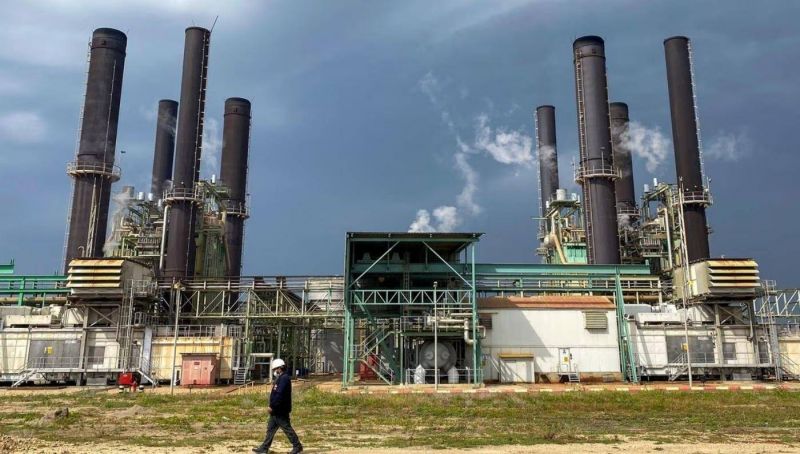
Power plant in Gaza (Credit: Mohammed Salem/Reuters)
Israel imposed on Monday a total siege on Gaza, which means that parts of the population are left without electricity and water.
The Gaza Strip needs a generating capacity of around 500 megawatts (MW) to be entirely supplied with electricity, according to data published by the US Agency for International Trade in 2022.
The Gaza Strip power plant can generate a maximum of 140 MW. Before the war, the Gaza Power Generating Company (GPGC) could not afford to buy enough fuel to keep it running at full capacity, so the plant only produced 80 MW. Gaza also used to receive 120 MW from Israel.
In the past, Gaza got some electricity through high-voltage lines linking it to Egypt; but these have been "inoperative for years,"according to the US Agency for International Trade.
As a result, there was a shortfall of 300 MW, which was provided almost entirely by inhabitants' private, individual or collective generators. Like in Lebanon, those generators operate during the cut-off hours imposed by GBGC and the Israeli supplier.
As part of their "total siege" on the Gaza Strip, Israel announced on Monday that it stopped supplying the Strip with electricity.
On Wednesday, the last stocks of fuel ran out. As a result, the Gaza power plant is now at a standstill.
Gaza's inhabitants can now only rely on private generators, as long as they can keep them supplied with fuel.
The lack of electricity heavily impacts hospitals and other infrastructure, such as water distribution services that pump water from the Israeli coast and the Gaza Strip.
On Tuesday, the spokesman for the Office for the Coordination of Humanitarian Affairs (OCHA) Jens Laerke said that the combination of electricity and water cuts could result in a water shortage for 610,000 out of two million people living in Gaza. Israel had provided between 5 percent and 10 percent of the Gaza Strip's water needs until Hamas's attack, according to data from international organizations including the United Nations International Children's Emergency Fund (UNICEF).
Total water consumption was around 200 million cubic meters in the Gaza Strip in 2018, according to official Palestinian Authority figures quoted by the Israeli Information Center for Human Rights in the Occupied Territories (Btselem).